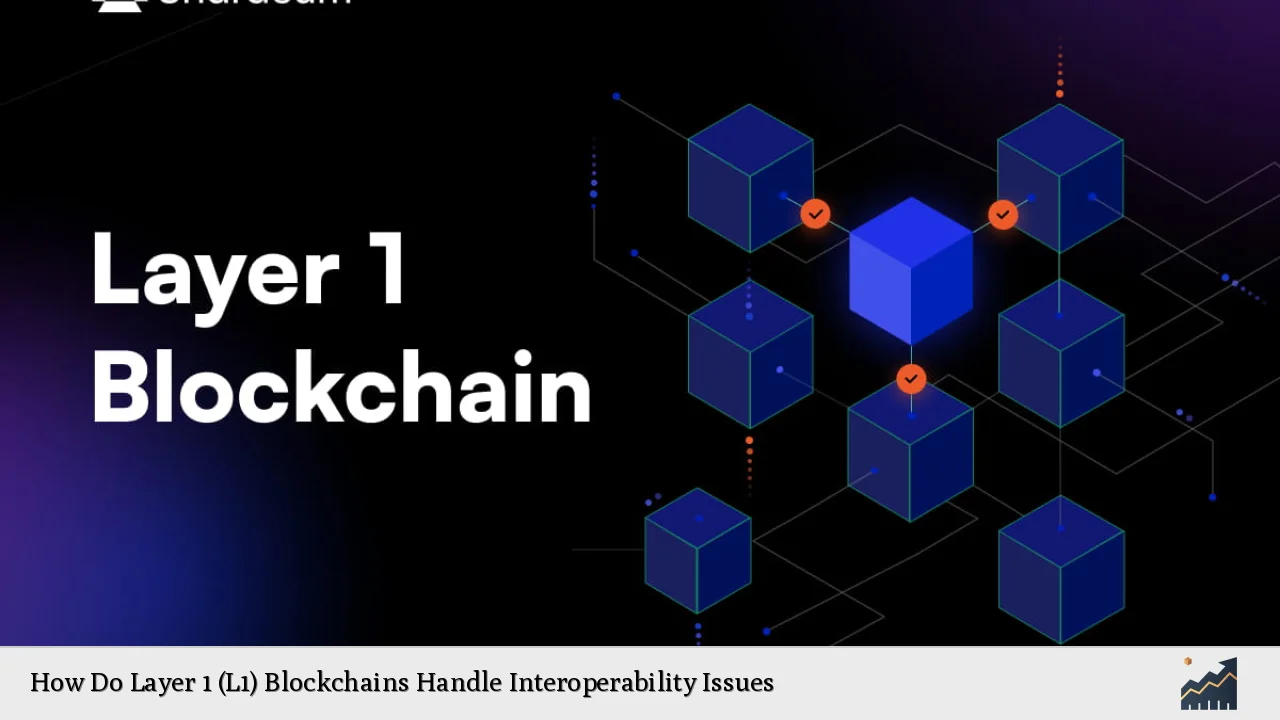Layer 1 (L1) blockchains serve as the foundational layer of blockchain technology, providing essential services such as transaction processing, security, and consensus. However, one of the significant challenges facing L1 blockchains is interoperability—the ability to communicate and operate seamlessly with other blockchain networks. As the blockchain ecosystem grows, the need for efficient interoperability solutions becomes increasingly critical to enhance functionality, scalability, and user experience across diverse platforms.
| Key Concept | Description/Impact |
|---|---|
| Interoperability | The capacity of different blockchain networks to communicate and exchange data or assets without intermediaries, fostering a more integrated ecosystem. |
| Cross-Chain Bridges | Protocols that enable the transfer of assets and data between different blockchains, facilitating interoperability by creating secure channels for transactions. |
| Consensus Mechanisms | The methods used by blockchains to achieve agreement on the state of the ledger; different mechanisms can impact interoperability capabilities. |
| Layer 2 Solutions | Technologies built on top of L1 blockchains that enhance scalability and can also facilitate cross-chain interactions. |
| Standardized Protocols | Common frameworks that allow various blockchains to communicate effectively, reducing friction in cross-chain operations. |
Market Analysis and Trends
The blockchain interoperability market has experienced significant growth, with projections indicating an increase from $0.54 billion in 2023 to $0.70 billion in 2024, reflecting a compound annual growth rate (CAGR) of 29.0%. This growth is driven by rising demand for decentralized applications (dApps), cross-chain asset transfers, and enhanced user experiences across multiple blockchain platforms.
Several factors contribute to this trend:
- Increased Adoption of DeFi: Decentralized finance (DeFi) applications require seamless interactions between different blockchains to provide liquidity and trading options.
- Emergence of Cross-Chain Protocols: Innovations like HyperNova’s bridgeless technology are enhancing security and efficiency in cross-chain communications by eliminating centralized points of failure.
- Growing Need for Scalability: As user adoption increases, L1 blockchains face challenges related to transaction speed and costs. Interoperability solutions help alleviate these issues by distributing loads across multiple chains.
Implementation Strategies
To effectively address interoperability issues, L1 blockchains can adopt several strategies:
- Cross-Chain Bridges: These are essential for enabling asset transfers between different L1s. For example, the Avalanche Bridge allows users to move assets between Avalanche and Ethereum seamlessly.
- Standardized Communication Protocols: Developing common standards for data exchange can simplify interactions between various blockchain networks. Cross-chain communication protocols (CCCP) are critical in this regard.
- Layer 2 Solutions: By implementing Layer 2 scaling solutions like rollups or state channels, L1 chains can enhance their transaction throughput while maintaining compatibility with other networks.
- Interoperability Protocols: Solutions such as Polkadot’s parachains or Cosmos’ IBC (Inter-Blockchain Communication) framework allow multiple blockchains to interoperate efficiently while maintaining their unique characteristics.
Risk Considerations
While striving for interoperability, L1 blockchains must navigate various risks:
- Security Vulnerabilities: Cross-chain bridges can introduce potential attack vectors. Ensuring robust security measures is crucial to prevent exploits that could compromise multiple networks.
- Complexity in Protocol Integration: Different consensus mechanisms and data structures among blockchains can complicate interoperability efforts. Developing standardized protocols is essential but challenging.
- Regulatory Compliance: As interoperability increases, so does the scrutiny from regulatory bodies. Ensuring compliance across jurisdictions adds another layer of complexity to cross-chain operations.
Regulatory Aspects
The regulatory landscape surrounding blockchain technology is evolving rapidly. Key considerations include:
- Compliance Requirements: As L1 blockchains facilitate cross-border transactions, they must adhere to varying regulations regarding anti-money laundering (AML) and know your customer (KYC) practices.
- Data Privacy Laws: Different regions have distinct data protection regulations that impact how information is shared across chains.
- Standardization Initiatives: Regulatory bodies are beginning to propose frameworks for blockchain interoperability that promote secure and compliant interactions between networks.
Future Outlook
The future of Layer 1 blockchain interoperability looks promising as technological advancements continue to emerge. Key trends include:
- Increased Investment in Interoperability Solutions: Companies are focusing on developing innovative technologies that facilitate seamless interactions between different blockchain ecosystems.
- Growth of Decentralized Applications: As dApps become more prevalent, the demand for interoperable solutions will rise, driving further innovation in this space.
- Enhanced User Experiences: By improving interoperability, users will benefit from faster transactions and reduced costs, encouraging broader adoption of blockchain technologies.
Frequently Asked Questions About How Do Layer 1 (L1) Blockchains Handle Interoperability Issues
- What is Layer 1 blockchain?
Layer 1 refers to the base level of a blockchain network that handles core functionalities such as transaction processing and security. - Why is interoperability important?
Interoperability allows different blockchains to communicate effectively, enabling seamless asset transfers and enhancing overall utility. - What are cross-chain bridges?
Cross-chain bridges are protocols that facilitate the transfer of assets between different blockchain networks. - How do Layer 2 solutions improve interoperability?
Layer 2 solutions enhance scalability and can facilitate cross-chain interactions without burdening the main chain. - What risks are associated with cross-chain transactions?
Risks include security vulnerabilities in bridges and compliance challenges across different regulatory environments. - How does regulation impact blockchain interoperability?
Regulatory compliance requirements can complicate cross-chain operations but also promote trust in the ecosystem. - What is the future outlook for blockchain interoperability?
The future appears bright with ongoing investments in technology that enhances seamless interactions between diverse blockchain networks. - How can I stay updated on developments in blockchain interoperability?
Following industry reports, joining forums, and subscribing to newsletters from reputable sources can keep you informed about advancements in this area.
In conclusion, while Layer 1 blockchains face significant challenges regarding interoperability, ongoing innovations and strategic implementations hold promise for creating a more connected blockchain ecosystem. As investment continues to flow into this space, both individual investors and finance professionals should remain vigilant about emerging trends and technologies that could shape the future of decentralized finance.

